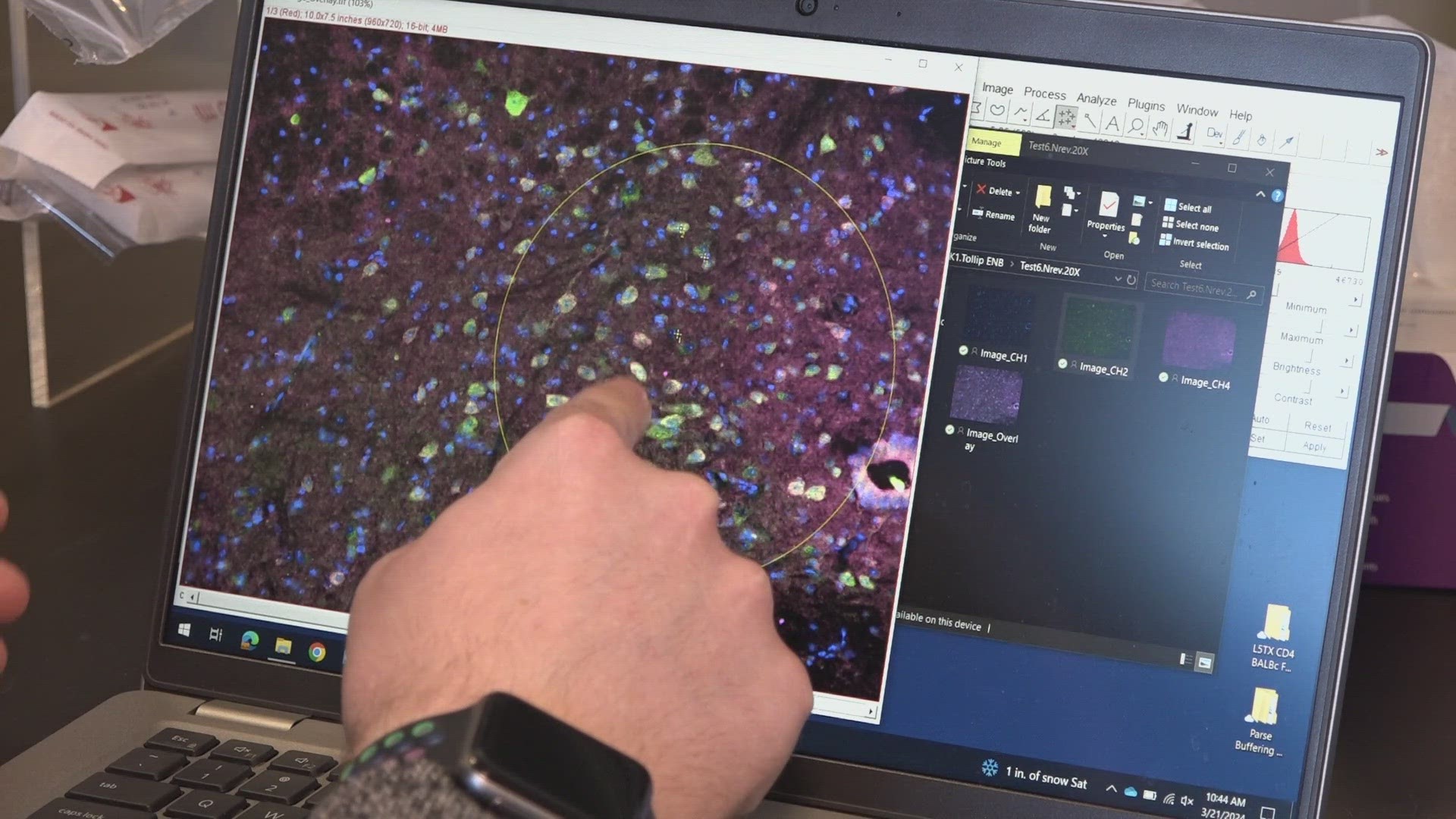BIDDEFORD, Maine — Living with HIV has seen remarkable advancements in treatment over the years, yet many individuals still grapple with the persistent challenge of nerve complications, leading to chronic pain.
According to the National Library of Medicine, a staggering 51 percent of people living with HIV experience pain associated with the virus.
The University of New England (UNE) is working to develop a novel drug aimed at alleviating nerve pain in HIV patients.
Dr. Ling Cao, a distinguished professor of biomedical sciences at UNE, has been at the forefront of this research endeavor for nearly two decades.
Her tireless dedication has recently been bolstered by a substantial $1.7 million grant awarded by the National Institutes of Health (NIH), signaling a significant step forward in addressing this critical healthcare need.
Cao's research journey began 18 years ago with a mission to find effective ways to mitigate nerve pain in individuals living with HIV.
"It starts out in the toes, the foot, then going up, so the nerve is dying back, and over time, symptoms before severe," Cao said.
Despite the prevalence of this issue, there currently exists no FDA-approved treatment for HIV-related nerve pain.
With the generous funding from the NIH, Cao and her team are optimistic about their prospects.
"You know, research cost[s] a lot of money. [The funding supports] doing experiments and students being on the project and working with us," Cao said.
Medical student Dalton Canonico expresses his astonishment, stating, "You hear about these big research hospitals and schools getting big funded projects; this is the state of Maine, this is a small school, and we are getting millions of dollars to study HIV pain."
The $1.7 million grant will be disbursed over five years, providing ample time for researchers to delve into their investigations.
"We will be treating in our animal models, and we hope in the future we can test it with human trials," Cao said.
The ultimate goal is to identify potential drug candidates that can then proceed to the next phase of development and, ultimately, FDA approval.

